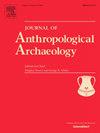人类学考古学中的“联盟”问题
IF 2.2
1区 社会学
Q1 ANTHROPOLOGY
引用次数: 0
摘要
联盟是人类社会的重要组成部分,往往对社会存在本身至关重要。因此,在人类学和考古学的论述中,联盟随处可见也就不足为奇了。然而,关于联盟的学术研究主要是案例研究,而不是对这一现象本身的分析讨论。虽然在考古记录中很难确定联盟,但它们在人类事务中太重要了,不容忽视。我们相信,如果没有更好地理解联盟,人类学考古学就不能完全解决竞争和冲突,我们在这里调查了联盟的各个方面,我们希望这些方面可以对推进这一领域有所帮助。我们主要关注联盟的军事和政治方面,即旨在增加非致命性和致命性集体力量和权力的联盟。我们的调查借鉴了前现代社会的人种学和历史记录,以确定联盟的共同特征及其变化的维度。我们提供了一些关于如何解释这种差异的想法,并对未来的研究提出了一些假设和建议。本文章由计算机程序翻译,如有差异,请以英文原文为准。
Problematizing ‘alliance’ in anthropological archaeology
Alliances are critical components of human sociality, often essential to social existence itself. It is no surprise therefore that alliance crops up everywhere in anthropological and archaeological discourse. Yet scholarship on alliance consists largely of case studies rather than analytical discussion of the phenomenon itself. While alliances can be difficult to identify with confidence in the archaeological record, they are too important in human affairs to ignore. Motivated by our belief that anthropological archaeology cannot fully address competition and conflict without a better understanding of alliances, we survey here various dimensions of alliance that we hope can be useful in advancing the field. We focus primarily on military and political aspects of alliances – i.e., alliances intended to increase non-lethal and lethal collective strength and power. Our investigation draws from the ethnographic and historical record of premodern societies to identify both the common characteristics of alliances and their dimensions of variability. We offer thoughts on how some of this variation might be explained, and we conclude with some hypotheses and suggestions for future research.
求助全文
通过发布文献求助,成功后即可免费获取论文全文。
去求助
来源期刊

Journal of Anthropological Archaeology
Multiple-
CiteScore
4.00
自引率
11.10%
发文量
64
期刊介绍:
An innovative, international publication, the Journal of Anthropological Archaeology is devoted to the development of theory and, in a broad sense, methodology for the systematic and rigorous understanding of the organization, operation, and evolution of human societies. The discipline served by the journal is characterized by its goals and approach, not by geographical or temporal bounds. The data utilized or treated range from the earliest archaeological evidence for the emergence of human culture to historically documented societies and the contemporary observations of the ethnographer, ethnoarchaeologist, sociologist, or geographer. These subjects appear in the journal as examples of cultural organization, operation, and evolution, not as specific historical phenomena.
 求助内容:
求助内容: 应助结果提醒方式:
应助结果提醒方式:


